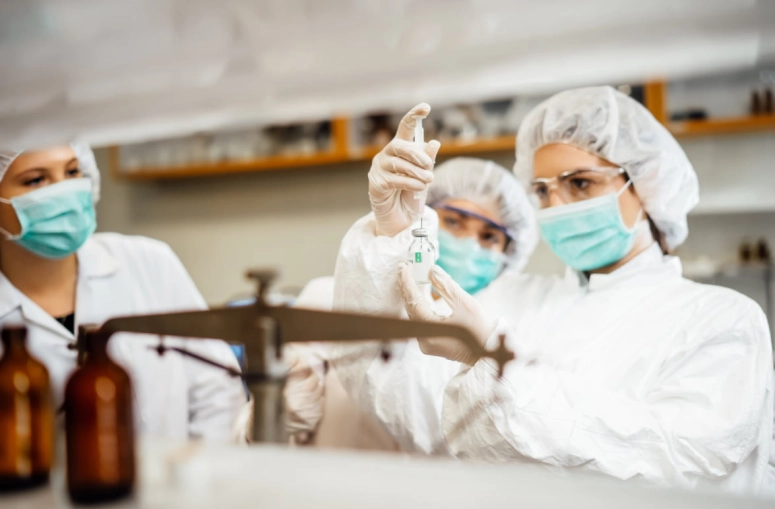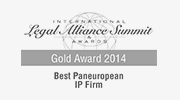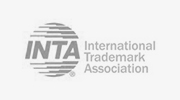10 June 2022
Should therapeutic and diagnostic methods be patentable?
This subject has always generated discussions about patentability and arguments about the limits that should be acceptable.
In the context of facing the global COVID pandemic, several questions are raised, such as whether the increased importance of Therapeutic and Diagnostic Methods or even if the development and evolution of personalized medicine should affect the treatment of this subject as eligible for treatment of patenting.
Restrictions on the patentability of diagnostic and therapeutic methods have a deontologic impact, as many opinions happen to agree with the idea of medical practitioners not being impeded or restricted at a patient’s point of care out of concern that a treatment (Therapeutic Method) or Diagnostic Method may be protected by a patent.
This thinking is present in the patent legislation of most countries, where diagnostic and therapeutic methods are not patentable.
International perspectives
The TRIPS Agreement is the principal international agreement dealing with intellectual protection.
It establishes minimum rules of protection concerning each of the main areas of intellectual property and has to be followed by each member.
Every element of protection is defined, namely the matter to be protected, the rights to be granted, and permissible exceptions to these rights plus the minimum duration of protection.
Article 27 (2) and (3) of the TRIPs Agreement state:
2. Members may exclude from patentability inventions the prevention within their territory of the commercial exploitation of which is necessary to protect order, public or morality, including to protect human, animal or plant life or health or to avoid serious prejudice to the environment, provided that such exclusion is not made merely because the exploitation is prohibited by their law.
3. Members may also exclude from patentability:
(a) diagnostic, therapeutic, and surgical methods for the treatment of humans or animals;
(…)
As mentioned before, diagnosic and therapeutic methods are not patentable in several territories. Such is the case with legislation in Europe, reflected e.g. in Article 53(c) of the European Patent Convention, which specifies that:
“European patents shall not be granted in respect of (…) methods for treatment of the human or animal body by surgery or therapy and diagnostic methods practised on the human or animal body (…).”
In China, article 25 (3) of the Chinese Patent Law – exceptions to patentability, explicitly states that “no patent right shall be granted for methods such as the diagnosis or the treatment of diseases” As testified in Part II, Chapter 1, Section 4.3.1.1 to mean that where a method involving diagnosis of a disease is (i) practiced on a living human or animal body (or in vitro samples from that body) and (ii) its immediate purpose is to obtain the diagnostic result of a disease or health condition, patent rights cannot be granted.
In Mexico, article 49 of the Federal Law for the Protection of Intellectual Property excludes from being patentable diagnostic methods applicable to humans or animals. The criteria in Mexico exclude diagnostic methodologies directly affecting (invasive in any of their steps) humans or animal bodies, but allow in vitro or ex vivo diagnostic methods.
In the United States, the patentability of inventions in the therapeutic and diagnostic field has been contemplated in several cases. The understanding of the competent body (USPTO) is that a therapeutic and diagnostic method is equivalent to a process and, therefore, is patentable as long as it is new, non-obvious, helpful, and satisfies all other conditions imposed in the country’s patent code.
In Japan, Patent Act does not explicitly exclude diagnostic methods from the patentable subject matter. However, according to the Tokyo High Court, diagnostic methods are regarded as medical activity and thus lack industrial applicability, meaning that such inventions do not satisfy the requirements of the Japanese Patent Act. According to the Japanese Patent and Utility Model Examination Guidelines, medical activity are the methods of surgery, therapy, or diagnosis of humans commonly practiced by medical doctors (or directed by medical doctors.) On the other hand, methods of collecting medical information and data by measuring and sensing for diagnostic purposes may be patentable as long as “medical activity” is not involved.
Scenary in Brazil
The Brazilian Industrial Property Law (LPI) establishes in article 10 that operative or surgical techniques and therapeutic or diagnostic methods for use on the human or animal body are not considered inventions.
In this context, the Therapeutic or Diagnostic Methods do not meet the requirement of industrial application, according to article 15 of the Brazilian Industrial Property Law:
Art. 15. The invention and the utility model are susceptible to industrial applications when they can be used or produced in any industry.
The operative or surgical techniques had their protection practically discarded. Meanwhile, diagnostic methods performed outside the human or animal body are understood to be patentable.
Surgical devices, diagnostic devices, medicines, in vitro diagnostic methods, and diagnostic methods carried out within the scope of a laboratory are considered patentable according to the solid jurisprudence of the BPTO.
As a rule, any procedure performed within the scope of an industry, a diagnostic laboratory, or a pharmaceutical laboratory is patentable (provided it meets the other requirements of the Brazilian IP Law).
Brazilian IP Law prohibits the granting of patents for medical activities performed within the hospital environment, especially those performed directly on the patient’s body.
This Law considers therapeutic methods are those intended to cure or prevent diseases for malfunction of the human or animal body, relieve symptoms of pain, suffering, and discomfort, and restore or maintain normal health conditions.
Thus, therapeutic methods adopted in or outside the body have not contemplated an invention.
Claims in the format conventionally called Swiss formula “Use of a compound of formula X, characterized in that it is to prepare a medicament to treat disease Y” is not considered a therapeutic method.
The diagnosis is the nature’s knowledge of a medical condition, generally by investigating its history, etiology, and symptomatology via applying tests.
The diagnostic method involves several steps conveying to identify a clinical condition, including analysis and interpretation steps of the resulting data.
When diagnostic methods develop in the animal or human body, they are not considered an invention according to item VIII of article 10 of the Brazilian IP Law.
On the other hand, in vitro tests performed on blood samples or other tissues taken from the body are, consequently, considered an invention.
Furthermore, the treatment of body tissues, cells, or fluids after being removed from the animal or human body, or methods applied to them, such as in vitro methods, may be eligible for protection.
This situation includes measuring enzymes and blood sugar methods, blood tests, and serology tests.
Where opinions concur
As seen, variations show in the procedure diverse jurisdictions handle this matter.
Accurately, rapid and local diagnoses have become decisive in light of the global COVID pandemic, as much as treatment of diseases and disorders.
Furthermore, the development and evolution of personalized medicine have led to an increase in these medical techniques.
Considering harmonization concerning the patentability of Therapeutic and Diagnostic Methods as desirable, consistent, and predictable guidelines for Treatment and Diagnostic Methods from the patentability vision would be a dominant factor in the increasing research and development budget in this field.
If you are likely to continue your research in this field, we recommend these posts for your knowledge.
- Brazilian IP Law: http://www.planalto.gov.br/ccivil_03/Leis/L9279.htm
- BPTO – Resolution 169/2016: https://www.gov.br/inpi/pt-br/servicos/patentes/legislacao/legislacao/modulo2.pdf
- AIPPI – 2022 – Study Question Patentability of Diagnostic Methods: https://aippi.org/wp-content/uploads/2022/02/Study-Guidelines-Q280.pdf
- Article “CONTROVERSIES ON THE PATENT PROTECTION FOR SECOND MEDICAL USE OF KNOWN CHEMICAL COMPOUNDS” – Quim. Nova, Vol. 33, No. 8, 1821-1826, 2010 TRIPS Agreement: http://www.wto.org/english/docs_e/legal_e/27-trips_01_e.htm




























Comentarios
No Comments